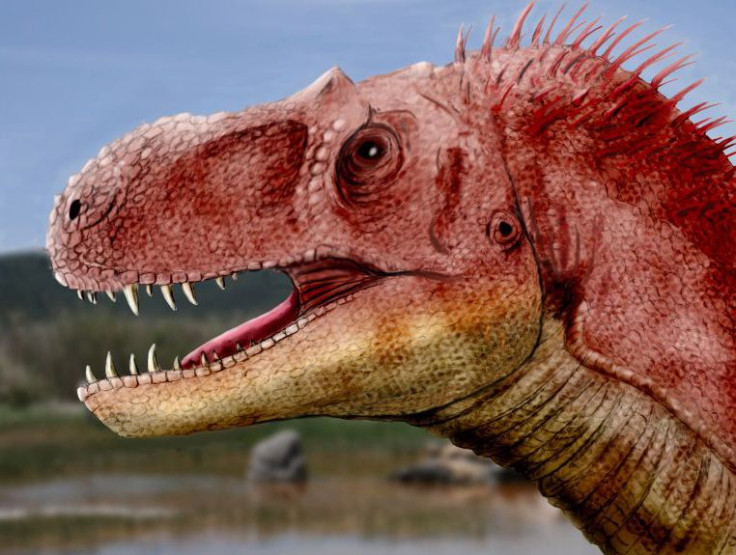Utah Fossil Discovery Is Tyrannosaur Skeleton From 76 Million Years Ago

Archaeologists have uncovered a new tyrannosaur fossil in Utah, a dinosaur that evolved before the famed Tyrannosaurus rex and whose skeleton still has almost all of its pieces.
The University of Utah reported that the fossil is from about 76 million years ago and came from a Teratophoneus curriei that could have been 20 feet long. This North American species had a short head and a long snout and this specific dinosaur that was dug up was either a preteen or a teenager — between 12 and 15 years old. Its remains can teach scientists more about prehistoric evolution.
“With at least 75 percent of its bones preserved, this is the most complete skeleton of a tyrannosaur ever discovered in the southwestern U.S.,” Randall Irmis, curator of paleontology at the Natural History Museum of Utah, where the specimen is being studied, said in the university statement. “We are eager to get a closer look at this fossil to learn more about the southern tyrannosaur’s anatomy, biology, and evolution.”
The Teratophoneus curriei emerged about 90 million years ago — several million years before the T. rex — and lived until the end of the Cretaceous period. The end of that period, about 66 million years ago, was the time of a mass extinction event that killed off the land dinosaurs, as well most of the rest of Earth’s life, including these two tyrannosaurs.

According to the university, the fossil was found in 2015 in a rocky area in southern Utah called the Kaiparowits Formation, but it took a long time to remove from the ground because of the lay of the land. The crews had to hike to the spot, lugging all their supplies with them. When the work was done, the bones were airlifted out of the area.
The bones still have to be prepared for research.
“We’ll look at the size of this new fossil, it's growth pattern, biology, reconstruct muscles to see how the animal moved, how fast could it run, and how it fed with its jaws,” Irmis said. “The possibilities are endless and exciting.”
The Kaiparowits Formation is a hotspot for prehistoric specimens.
“The monument is a complex mix of topography — from high desert to badlands — and most of the surface area is exposed rock, making it rich grounds for new discoveries,” paleontologist Alan Titus said in the statement. “And we’re not just finding dinosaurs, but also crocodiles, turtles, mammals, amphibians, fish, invertebrates, and plant fossils — remains of a unique ecosystem not found anywhere else in the world.”
This tyrannosaur may have been buried under water, either in a river or from floodwaters, which would account for why it was mostly in one piece, including a nearly complete skull.
“Although many tyrannosaur fossils have been found over the last one hundred years in the northern Great Plains region of the northern U.S. and Canada, until relatively recently, little was known about them in the southern U.S.,” the university said. “This discovery, and the resulting research, will continue to cement the monument as a key place for understanding the group’s southern history, which appears to have followed a different path than that of their northern counterparts.”
© Copyright IBTimes 2024. All rights reserved.




















